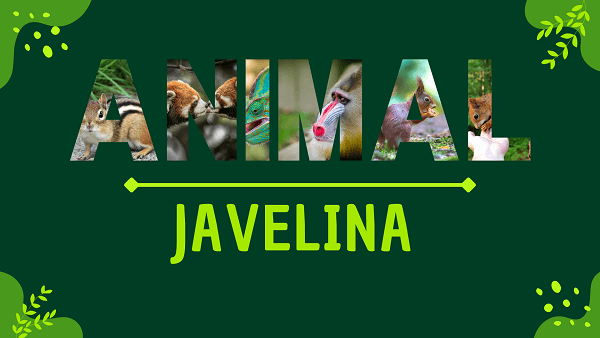
Javelina | Facts, Diet, Habitat & Pictures
Javelina Overview
Appearance
Javelinas also known as collared peccaries, are medium-sized pig-like mammals with a distinctive appearance. They typically have dark brown to black coarse fur and a white band or "collar" running across their shoulders. Their bodies are compact, with short legs and a pig-like snout.
Origins And Evolution
Javelinas, or collared peccaries, belong to the family Tayassuidae, a distinct branch within the order Artiodactyla. Their origins and evolution can be traced back to the Miocene epoch, approximately 20 million years ago. Fossil records show that their ancestors were more diverse in terms of size and morphology.
Over time, these early peccary-like animals evolved into the modern collared peccaries found today. Javelinas are believed to have originated in North America, spreading across continents through various evolutionary stages. They share a common ancestor with the larger, extinct entelodonts, which were dominant during the Eocene period.
During the Pleistocene epoch, collared peccaries adapted to changing environments and diversified into various species, with some migrating to South America. Their evolutionary path is marked by adaptations to different ecological niches.
These adaptations include changes in dentition and limb proportions to suit their omnivorous and terrestrial lifestyle. Javelinas, through their evolutionary journey, have become an integral part of the ecosystems they inhabit today.
Behavior and Lifestyle
Javelinas, also known as collared peccaries, are highly social animals that typically live in groups known as "sounders." These sounders can consist of several individuals, often with a dominant female leading the group.
They are primarily diurnal, meaning they are active during the day, and they have a diverse omnivorous diet, including fruits, plants, insects, and small vertebrates.
Javelinas are skilled runners and can reach speeds of up to 35 miles per hour when threatened. They communicate through a combination of vocalizations, including barks, grunts, and chattering teeth. Their strong sense of smell helps them forage for food and navigate their surroundings.
Javelina Scientific Classification
- Kingdom: Animalia
- Phylum: Chordata
- Class: Mammalia
- Order: Artiodactyla
- Family: Tayassuidae
- Genus: Pecari
Javelina Locations
- Arizona, USA
- New Mexico, USA
- Texas, USA
- Mexico
- Central and South America
- Sonoran Desert
- Chihuahuan Desert
- Southwestern United States
- Central America
- Northern South America
Fast Facts
- Name: Javelina
- Scientific Name: Pecari tajacu
- Habitat: Deserts, Forests
- Diet: Omnivorous, Plant-based
- Physical Features: Collared, Stocky
- Nocturnal: Diurnal mostly
- Solitary: Group-living
- Unique Order: Artiodactyla
- Lifespan: 7-8 years
- Conservation Status: Least Concern
- Fun Facts: Peccaries, Scent glands
Physical Characteristics
- Color: Brown, Gray
- Skin Type: Coarse-haired
- Top Speed: 35 km/h
- Lifespan: 7-8 years
- Weight: 20-40 kg
- Length: 90-130 cm
- Age of Sexual Maturity: 1-2 years
- Age of Weaning: 2 months
Javelina FAQs
What is a javelina?
A javelina, also known as a collared peccary, is a medium-sized pig-like mammal found in the Americas.
Are javelinas pigs?
Javelinas are not pigs, although they resemble them. They belong to a different family, Tayassuidae, and have distinct characteristics.
What do javelinas eat?
Javelinas are omnivorous, with a diet that includes plants, fruits, roots, insects, and occasionally small vertebrates.
Do javelinas pose a threat to humans?
Javelinas are generally not considered a significant threat to humans, but they can become aggressive when cornered or if they feel threatened.
Related:
- Tarantula
- Mackerel
- Mackerel
- Sea Stars
- Bird
- Amphibians
- Vertebrates
- Sand Dollars
- Barnacles
- Scallop
- Brittle stars
- Tilapia
- Carp
- Krill
- Catfish
- Grouper
- Calm
- Yak
- Yucatan Brown Brocket
- White-tailed Deer
- Uakari
- Utahraptor (Dinosaur)
- Qinghai Lake Naked Carp
- Qilian Shrew
- Qinling Panda
- Qacha’s Nek long-fingered Frog
- Red Fox
- Red Panda
- Rockhopper Penguin
- Salamander
- Snail
- Storks



